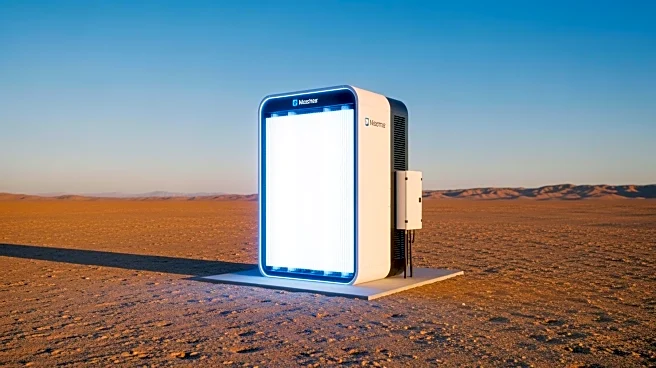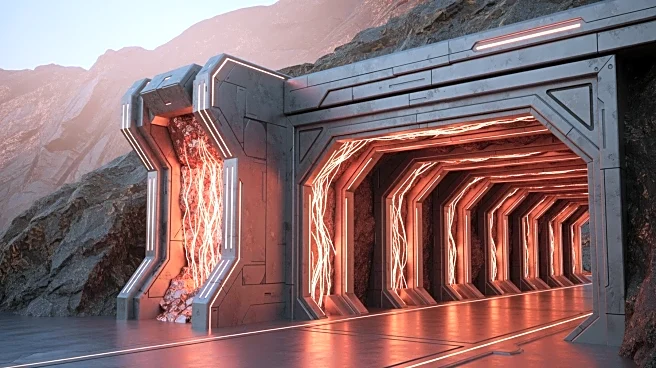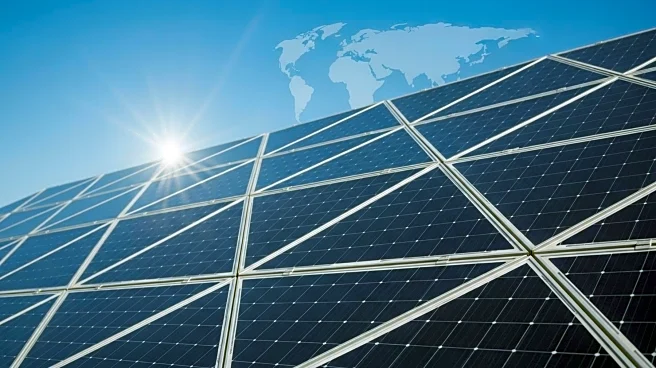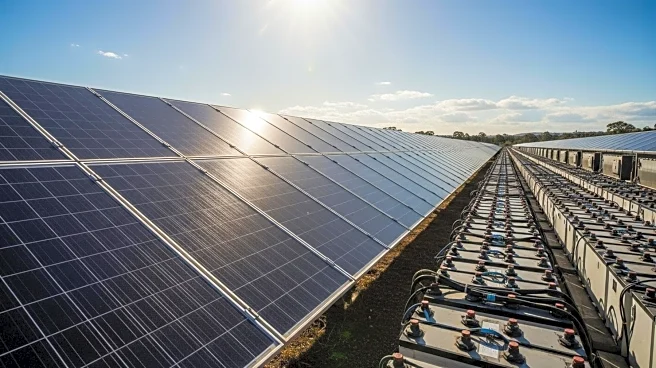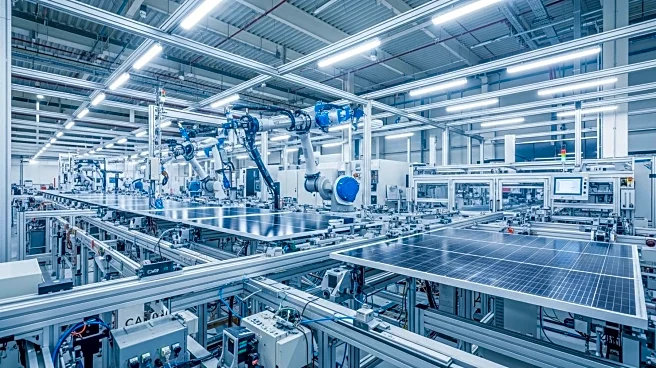What's Happening?
Torch Clean Energy is advancing its renewable energy initiatives by developing two 80 MW solar arrays in Cochise County, Arizona. The company has partnered with Fluence Energy to install a 160 MW / 640
MWh battery system to support these solar projects. This collaboration is part of a broader trend in the U.S. where utility-scale battery storage is expected to more than double by 2026, reaching nearly 65 GW. The project, named 'Winchester,' is anticipated to be operational by 2027, providing grid balancing and supporting regional economic growth. Torch Clean Energy, which focuses on the U.S. Mid-Atlantic and Southwest regions, has already developed over 1.2 GW of green power assets. The battery system will enable cost-effective solar generation to be dispatched when needed most, qualifying for domestic content tax credits due to its domestically manufactured components.
Why It's Important?
The partnership between Torch Clean Energy and Fluence Energy represents a significant step in the U.S. clean energy sector, particularly in battery storage technology. As the demand for renewable energy grows, projects like Winchester are crucial for ensuring reliable and affordable power. The deployment of large-scale battery systems is essential for grid stability, especially as solar and wind power become more prevalent. This development supports local economic activity and infrastructure investment, highlighting the importance of renewable energy in driving economic growth. The project also aligns with national goals to increase domestic energy production and reduce reliance on fossil fuels, contributing to environmental sustainability.
What's Next?
The Winchester project is set to be completed by 2027, with ongoing developments in battery technology and renewable energy expected to continue. As the U.S. Energy Information Administration forecasts significant growth in utility-scale battery storage, similar projects may emerge across the country. Stakeholders, including local governments and energy companies, will likely monitor the project's progress and its impact on regional energy supply and economic development. The success of this initiative could encourage further investments in renewable energy infrastructure, potentially influencing policy decisions and market dynamics.
Beyond the Headlines
The Winchester project underscores the shift towards sustainable energy solutions and the role of technology in transforming the energy landscape. The integration of battery storage with solar power not only enhances energy reliability but also supports environmental goals by reducing carbon emissions. This development may prompt discussions on the ethical implications of energy production and consumption, as well as the need for equitable access to clean energy resources. Long-term, the project could contribute to a cultural shift towards prioritizing sustainability in energy policies and practices.
